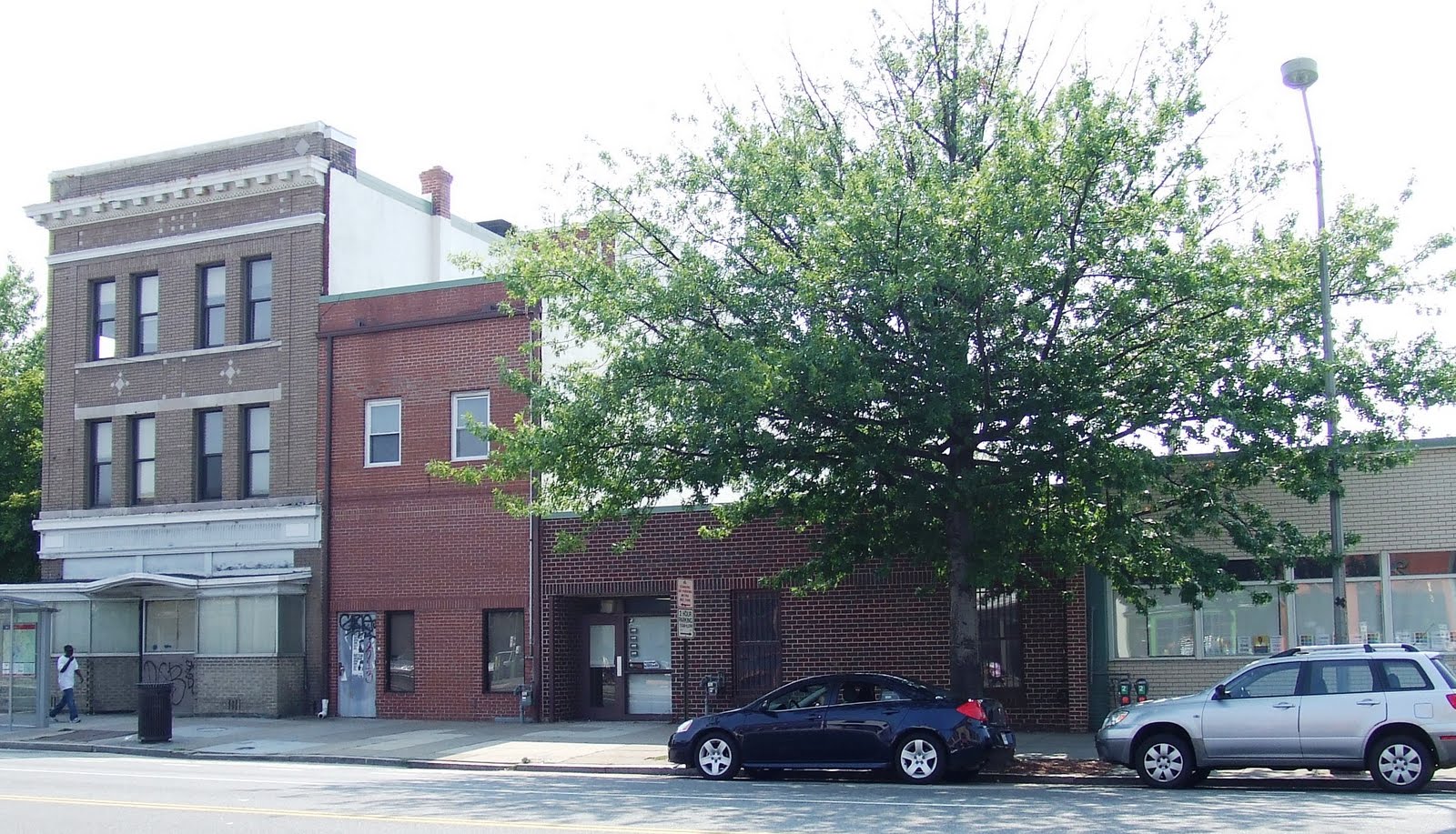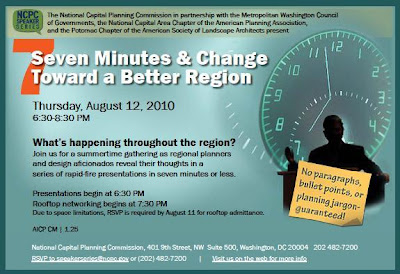 Following on the heels of Fairfax County's plan to transform Tysons Corner from a beltway exit to a citified, walkable community, financial giant Capital One has filed new plans for its Tysons Corner development, embracing the shift by proposing to turn its planned office park into a mixed-use model of urban planning. Capital One ensured future value of the land when it donated 3 of its 29 acres for an upcoming Metrorail station expected to open in 2013, a move it now seems ready to take advantage of.
Following on the heels of Fairfax County's plan to transform Tysons Corner from a beltway exit to a citified, walkable community, financial giant Capital One has filed new plans for its Tysons Corner development, embracing the shift by proposing to turn its planned office park into a mixed-use model of urban planning. Capital One ensured future value of the land when it donated 3 of its 29 acres for an upcoming Metrorail station expected to open in 2013, a move it now seems ready to take advantage of. Capital One had been approved for a 4-building office park on the 26-acre site just inside the beltway that it bought in 2000, but has built only one tower; in its place the company has now designed a mix of offices, parks, retail, residential and public
Capital One had been approved for a 4-building office park on the 26-acre site just inside the beltway that it bought in 2000, but has built only one tower; in its place the company has now designed a mix of offices, parks, retail, residential and public  spaces for what might someday be a live-work-walk community. No definitive time frame has been established. Capital One acknowledges that the economic outlook doesn't yet justify much of the construction, saying it has "no immediate plans" to develop the site. But "should the need arise," the bank wants an approved model in place and has stretched out its implementation over years as the climate in both financial institutions and real estate world improve.
spaces for what might someday be a live-work-walk community. No definitive time frame has been established. Capital One acknowledges that the economic outlook doesn't yet justify much of the construction, saying it has "no immediate plans" to develop the site. But "should the need arise," the bank wants an approved model in place and has stretched out its implementation over years as the climate in both financial institutions and real estate world improve.Consolidation of Capital One's headquarters began back in 2002, when it built a 14-story headquarters on its newly acquired site. But rather than build out the remaining 3 buildings with their combined 560,000 s.f. of space,
 despite finally nearing capacity with 1000 employees, McLean based Capital One proposes to build on the new Tysons redevelopment plan and take the campus "in an entirely different direction" with a daunting 5 million s.f. of development. If approved by the county, the "vibrant urban center" would hold 2.1m s.f. of office space rising up to 392 feet (though just 28 stories), 980 to 1230 residential units rising 20 stories, as well as hotels, parks, plazas and retail, all connected to the Tysons East Metro station.
despite finally nearing capacity with 1000 employees, McLean based Capital One proposes to build on the new Tysons redevelopment plan and take the campus "in an entirely different direction" with a daunting 5 million s.f. of development. If approved by the county, the "vibrant urban center" would hold 2.1m s.f. of office space rising up to 392 feet (though just 28 stories), 980 to 1230 residential units rising 20 stories, as well as hotels, parks, plazas and retail, all connected to the Tysons East Metro station. Few others have opted to launch similar projects; Quadrangle Development delivered the only new office building in 2009 and has held back on its approved residential development. But Capital One may have at least something in their wallet, since it is proposing a 15-story office building adjacent to the current headquarters and connected by an elevated walkway. It calls the building "the most likely to be constructed in the near term." The streetscape will be entirely reconfigured in what it calls an "urban grid system." Because the site is within a quarter of a mile of the new Metro station, density limits are eliminated, giving the region perhaps its best chance at a building that sets a new record for the area's tallest, possibly exceeding, just barely, Rosslyn's planned 390-foot Central Place tower. Capital One's application to the county will shoot
Few others have opted to launch similar projects; Quadrangle Development delivered the only new office building in 2009 and has held back on its approved residential development. But Capital One may have at least something in their wallet, since it is proposing a 15-story office building adjacent to the current headquarters and connected by an elevated walkway. It calls the building "the most likely to be constructed in the near term." The streetscape will be entirely reconfigured in what it calls an "urban grid system." Because the site is within a quarter of a mile of the new Metro station, density limits are eliminated, giving the region perhaps its best chance at a building that sets a new record for the area's tallest, possibly exceeding, just barely, Rosslyn's planned 390-foot Central Place tower. Capital One's application to the county will shoot  for the USGBC's green building certification on each of its buildings by using green or reflective roofs, rainwater retention systems, pervious pedestrian paths, and a preference of foot traffic over vehicular access. Despite the nod to sustainability, the development will extend Scotts Crossing Road over the beltway and connect to Jones Bridge Drive on the west side of I-495, better connecting the overly wide roads that criss-cross the area.
for the USGBC's green building certification on each of its buildings by using green or reflective roofs, rainwater retention systems, pervious pedestrian paths, and a preference of foot traffic over vehicular access. Despite the nod to sustainability, the development will extend Scotts Crossing Road over the beltway and connect to Jones Bridge Drive on the west side of I-495, better connecting the overly wide roads that criss-cross the area.County officials would not estimate the time frame for evaluating the application, a process that would include public hearings and studies, and presumably a series concessions between the county and Capital One; officials say they have not yet given input on the development plan.
Architects and planners envisioning the urban context include Bonstra Haresign as Urban Planner and Architect and William H. Gordon Associates as Civil Engineer and Landscape Architect. David Haresign, then Principal and Director of Architecture for Ai, assisted Capital One with initial site selection and designed the original master plan and the headquarters building, now iconic to the beltway bound as a curving "billboard"
 facing Tysons with the financier's logo. Like its planned successors, the first tower employed infrastructural adaptations to environmentalism, such as water-reducing plumbing, underfloor air distribution systems, pervious paving and local sourcing of materials, features not yet common at its inception.
facing Tysons with the financier's logo. Like its planned successors, the first tower employed infrastructural adaptations to environmentalism, such as water-reducing plumbing, underfloor air distribution systems, pervious paving and local sourcing of materials, features not yet common at its inception.Fairfax County real estate development news

































.jpg)



















